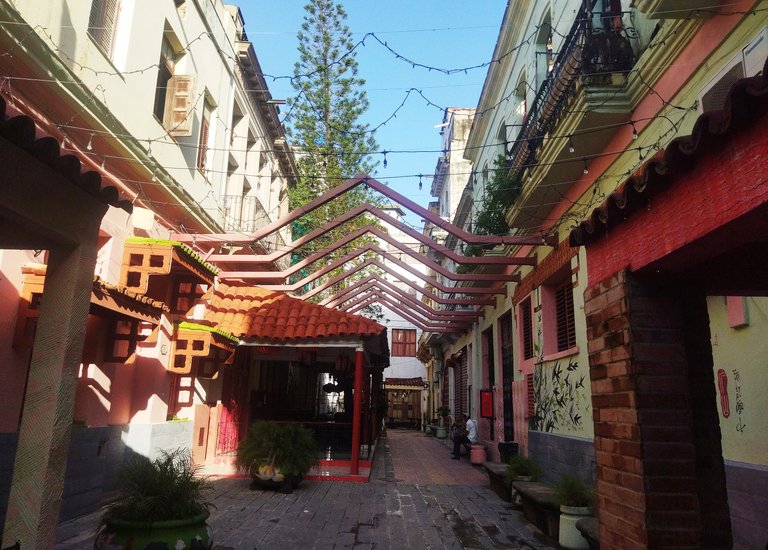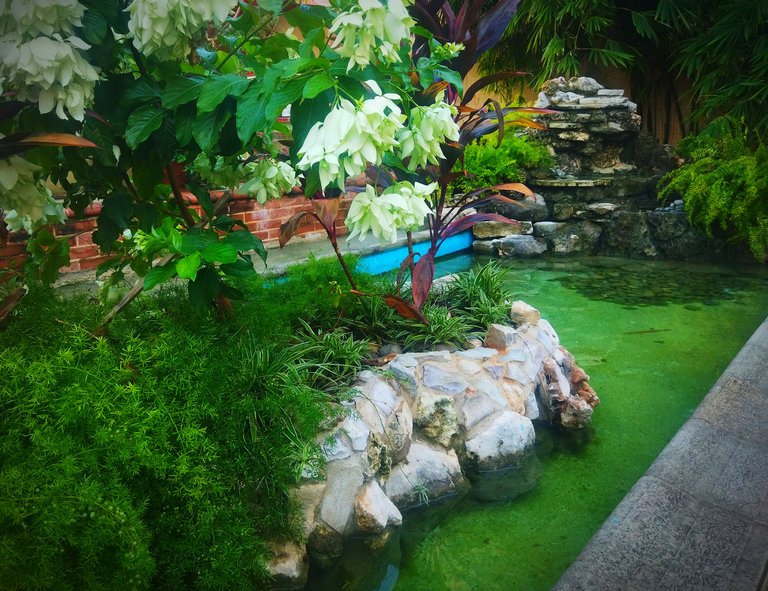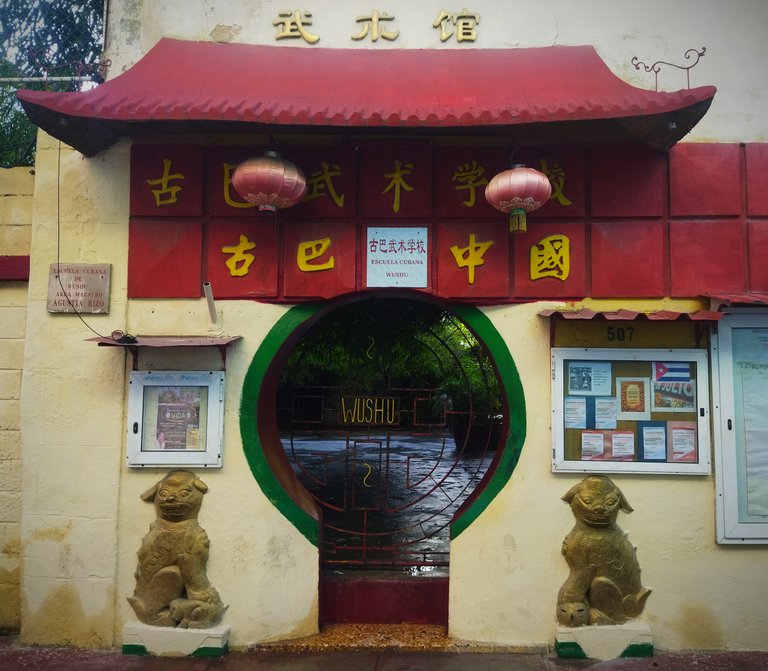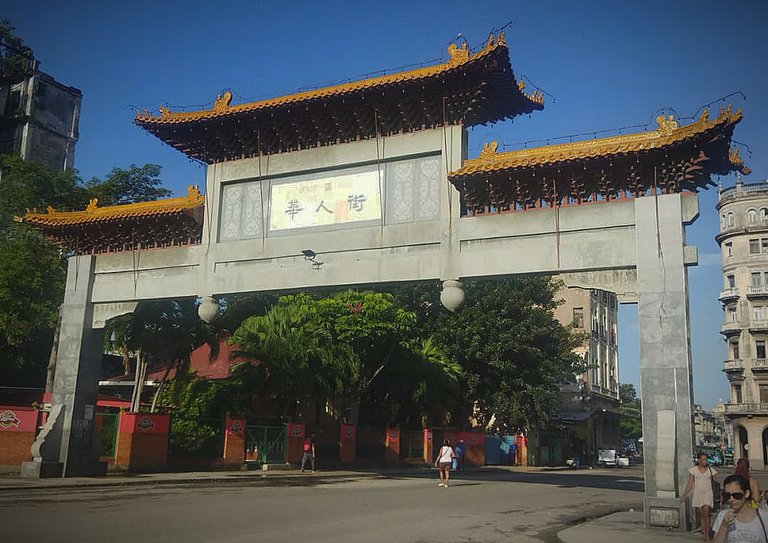
Can you imagine a Chinatown where no Chinese people live?
Welcome to the fascinating Chinatown of Havana, a place full of history and surprises, but today, I invite you to explore its architecture.
In this post, I shared why I arrived at this special corner after such a long time.
Spoiler alert: it was thanks to an invitation from a lifelong friend.
Although the neighborhood has changed, the essence of Chinese culture endures.
Thanks to the efforts of the Chinese Embassy and the Cuban Wushu School, this place has managed to keep a part of the rich Chinese heritage alive in our country.
My grandmother, who lived here, tells me that Chinatown was much larger. Imagine! On every corner, there was one of those stores we all know today as “the Chinese store"
One of the greatest charms of this neighborhood were the fondas, those places where you could eat well for little money.
Workers often made their stop here (my great-grandfather was one of them), enjoying quality food at a great price.
Unfortunately, none of the fondas have survived, but the low-ceilinged, two-story restaurants still remind us of those old times.

Today, the neighborhood has shrunk to about four blocks, but it still retains the essence of Chinese culture in its alleys.
In just a hundred meters, you can feel the heart of Chinese culture in Cuba. Here, you’ll find restaurants offering the famous fried rice and irresistible maripositas chinas (no english translation for this pastries), a delight that all Cubans know and love.
It is said that fried rice was invented in these very alleys. Is it true? That deserves some investigation! (For now, we’ll save it for future posts)
I must say I’m eager to try the ice cream shop because I already know the candy store by heart; they are two of the most visited places in this neighborhood.
Back to Chinatown
Recent projects have beautified the area with gardens and spaces to relax. In these corners, you can find typical products of Asian culture, such as fans and incense, adding a special touch to the atmosphere.

Chinatown wouldn’t be what it is without the work of two key institutions: the Confucius Institute and the Cuban Wushu School.
The former, a collaboration between the University of Havana and Beijing, has become the ideal place to learn Mandarin. Additionally, it organizes cultural workshops for Cuban children to discover the richness of Chinese culture.
I remember that when I was a child, there were kite-flying competitions every month. The winner would take home crafts and, above all, spicy treats from China!

On the other hand, the Cuban Wushu School, with over twenty years of dedication, has promoted Chinese culture in Cuba. Wushu, an ancient martial art, is widely practiced, and Tai Chi is one of its most well-known forms.
What I loved most about returning to this neighborhood is seeing how they strive to maintain and restore the area.
Although it is now more concentrated, every corner is cared for with great attention; the restored areas shine with meticulous detail.
The red colors and yellow letters continue to dominate, giving it that unique touch that evokes Chinese culture.
To conclude this journey, let me introduce you to the majestic gate that marks the entrance to Chinatown.
Its origin is a mystery, but according to historians, it represents the relationship between the Chinese and Cuban people, a connection that began in the 19th century with immigration.

From the Confucius Institute and the Cuban Wushu School, it is said that the gate was financed by the small Chinese community that still remains on the island. The exact origin may be uncertain, but what is certain is that this gigantic Asian-style arch is a symbol of unity.
If you are a tourist in Cuba or planning to visit the island, don’t miss the opportunity to experience Chinatown. It may not be the largest or the best in the world, but your visit will help local businesses and contribute to keeping this cultural gem alive.
I hope you enjoyed this journey through the only Chinatown where no Chinese people remain.
Do you have a Chinatown in your country? What part of this story caught your attention the most?
Feel free to leave your comment! It will be a pleasure to respond.
Read you soon!
[dahpilot]
Image used are mine

Posted Using InLeo Alpha
Very interesting! I visited Cuba in the 90's of the last century and passed on front of the old Havana chinese cemetery (I think it was this one https://havanatimes.org/photo-feature/the-chinese-cemetery-of-havana/ - https://www.rebeccabathory.com/blog/cuba-chinese-cemetery-barrio-chino), is it in the chinatown you wrote about? I remember that one person in front of the cemetery came to ask for money approaching the taxi and moved his finger over the closed car window doing what I thought was writing a chinese ideogram (hanzi). He looked to have some mixed chinese ancestry, maybe from the time when a lot of chinese immigrants lived in the city. Maybe the supposed hanzi ideogram was his family surname. Keep safe, thanks and good luck again!
The Chinese cemetery is somewhat distant from the Chinatown.
In those years, it was definitely worth visiting, but today it’s not so much, due to its total neglect.
One could say it’s a remote extension of the neighborhood. It’s about 11 kilometers away, and this cemetery you mention is one of the oldest in Latin America. How do you remember that visit to Cuba in the '90s? Did you like it? That was one of the toughest time in the island (I wasn't born yet)
It was an interesting trip in the middle of the balseros crisis, I think it was the cause of the tourist packages to Cuba decreased the prices and became more affordable for us in Brazil, even with our weak currency comparing with the US dollar. We visited Havana and Varadero invited by my wife's relatives from Japan, they're professional photographers and arranged a meeting with mr. Korda (the man who took the famous picture of Che Guevara) in his house in Havana. About that though time I remember a car ride in Malecon and we saw a group of balseros entering the sea, the taxi driver shouted "que se vayan todos!". We went to Copelia to try the chocolate ice cream featured in the movie Fresa y Chocolate and in Varadero we watch a brazilian soap opera on the TV with the hotel staff. Maybe I publish these and other memories here in Hive too.
That sounds like an epic trip!
I loved reading you because, as I told you, I've only heard stories from that time, and I think they’re never enough.
Today's Cuba is a 2.0 version of that Cuba, just as frozen in time.
If you decide to make those posts, mention me because I would gladly read them; it would truly be a pleasure to read those memories.
I liked your article - thinking to hire you as a guide in Chinatown. 😅
;)
I'd like to go and take some photos there.
Guilty of the charges
I spent a lot of time here when I was young
Get over here, I know you’ll do a spectacular job (as always), and stop by the bakery 😉
Thanks for the support 🙏🏻